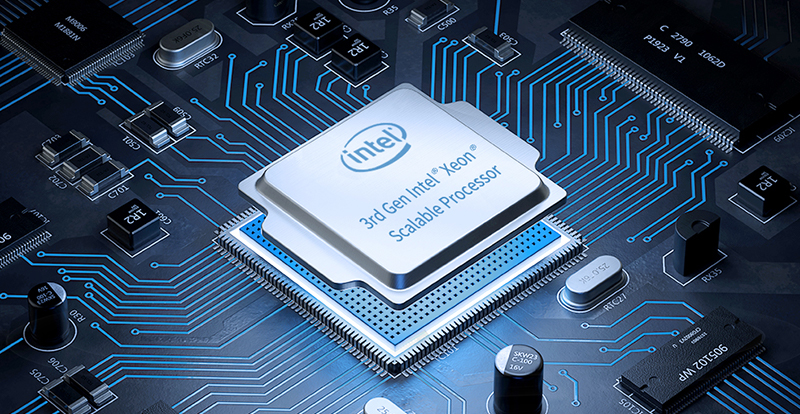Server CPU Model Code Analysis
Decoding Server CPU Model Numbers: A Comprehensive Guide
Server CPU model numbers are not arbitrary strings of letters and digits; they encode critical technical specifications, performance tiers, and use-case optimizations. This article breaks down the naming conventions for server processors, using Intel Xeon as a primary example. While other vendors (e.g., AMD EPYC) may follow different rules, the core principles of hierarchical classification and feature encoding remain similar.

1. Brand and Tier Identification
-
Brand: The prefix identifies the product family. For instance, Intel Xeon denotes a server/workstation-focused processor line.
-
Tier: Reflects performance and market positioning:
-
Pre-2017: Tiers were marked by prefixes like E3 (entry-level), E5 (mid-range), and E7 (high-end).
-
Post-2017: Intel introduced a metal-based tiering system:
-
Platinum: Models start with 8 or 9 (e.g., 8480H). Designed for mission-critical workloads, these CPUs support maximum core counts, advanced UPI interconnects, and enterprise-grade features.
-
Gold: Begins with 5 or 6 (e.g., 6448Y). Targets general-purpose servers and balanced performance.
-
Silver: Starts with 4 (e.g., 4410T). Optimized for lightweight workloads and edge computing.
-
-
2. Generation Identifier
The first digit after the tier indicates the processor generation. Higher numbers represent newer architectures:
-
1: 1st Gen Scalable Processors (2017, Skylake-SP, 14nm).
-
2: 2nd Gen Scalable Processors (2019, Cascade Lake, 14nm).
-
3: 3rd Gen Scalable Processors (2020–2021, Ice Lake/Cooper Lake, 10nm/14nm).
-
4: 4th Gen Scalable Processors (2023, Sapphire Rapids, Intel 7 process, Golden Cove architecture).
Example: In Platinum 8462V, the “4” signifies a 4th Gen (Sapphire Rapids) CPU.
3. SKU Number
The trailing digits (usually 2–3) differentiate SKUs within the same generation and tier. Higher SKU numbers generally imply better performance (e.g., more cores, larger cache):
-
Example: Gold 6448Y vs. Gold 6468Y: The latter (SKU 68) has more cores and higher clock speeds than the former (SKU 48).
4. Suffix Letters
Suffixes denote specialized features or optimizations:
-
C: Single-socket only (no multi-CPU support).
-
N: Enhanced for networking/NFV (Network Functions Virtualization).
-
T: Long-lifecycle support (10+ years).
-
Q: Liquid-cooling compatibility.
-
P/V: Optimized for cloud workloads (P for IaaS, V for SaaS).
Example: 4410T includes the “T” suffix for extended reliability in industrial applications.
5. Architecture and Interconnect Technologies
-
On-Die Architecture:
-
Ring Bus (pre-2017): Limited scalability due to latency spikes as core counts increased.
-
Mesh Architecture (post-2017): Grid-based core layout improves scalability (e.g., up to 40 cores in Ice Lake).
-
-
Interconnects:
-
UPI (Ultra Path Interconnect): Facilitates communication between multiple CPUs. Platinum-tier CPUs often support 3–4 UPI links (10.4–20.8 GT/s).
-
PCIe Support: Newer generations integrate updated PCIe standards (e.g., Sapphire Rapids supports PCIe 5.0).
-
Application-Based Selection Guide
-
High-Performance Computing (HPC): Prioritize Platinum CPUs (e.g., 8480H) with high core counts and UPI bandwidth.
-
Cloud Infrastructure: Choose P (IaaS) or V (SaaS) variants (e.g., 6454S).
-
Edge/Telecom: Opt for N-suffix models (e.g., 6338N) with network acceleration.
-
Industrial/Embedded Systems: Select T-suffix CPUs (e.g., 4410T) for extended lifecycle support.
Server CPU model numbers act as a shorthand for technical capabilities, enabling IT teams to quickly assess a processor’s performance tier, generation, and specialized features. By understanding these codes, organizations can align hardware choices with workload demands—whether deploying AI clusters, cloud-native apps, or ruggedized edge systems. For precise specifications, always cross-reference vendor resources like Intel’s ARK database or AMD’s technical briefs.



